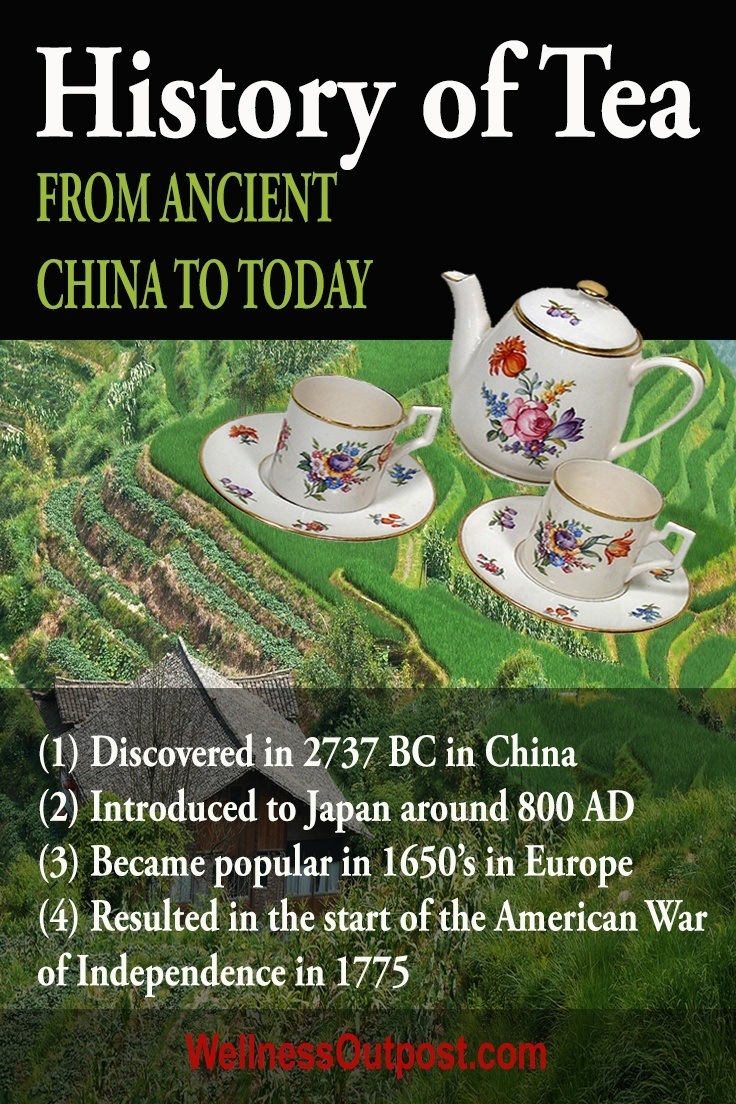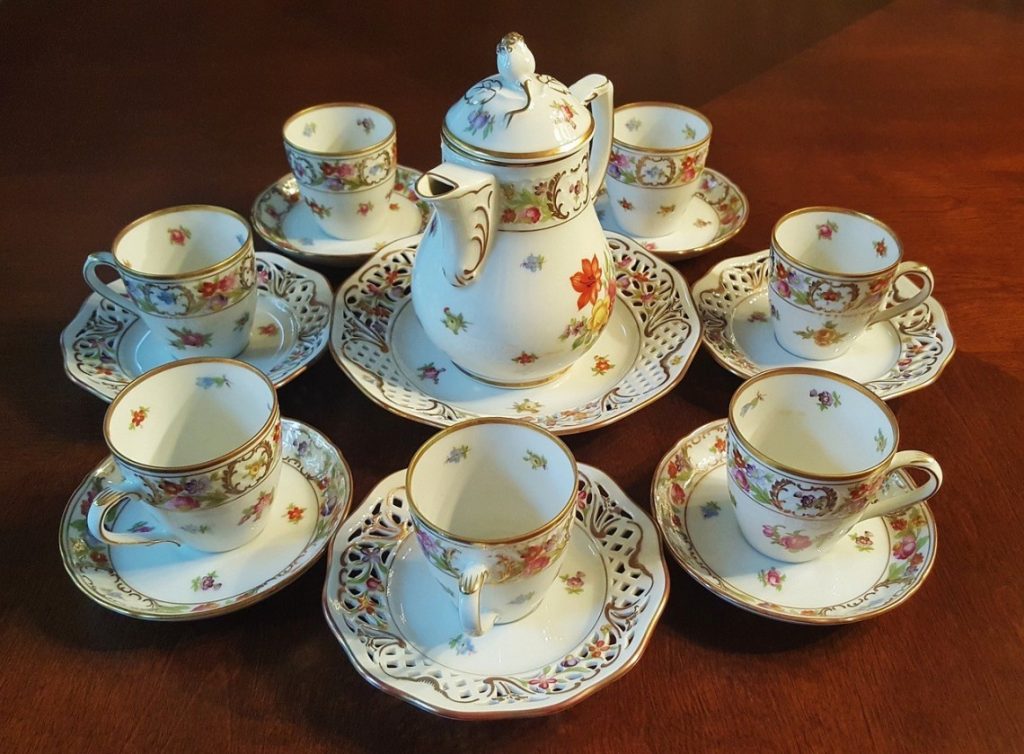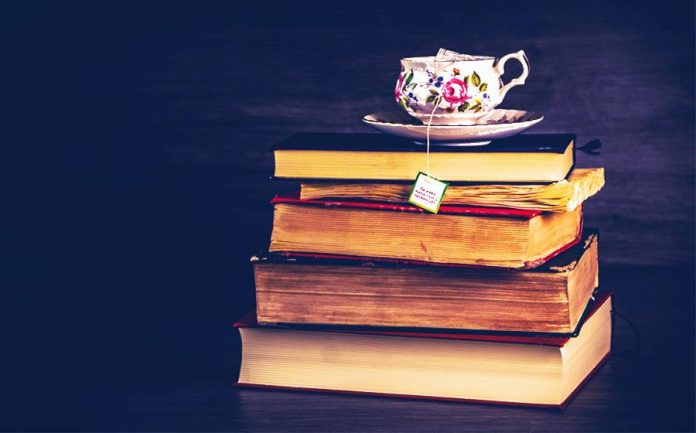The history of tea goes way back. The discovery of tea took place in 2737 BC (over 4,700 years ago) when a strange leaf fell into the boiling water of the Chinese Emperor and herbalist Shen Nung (Shennong) while he and his servants were out in the wild.
Not knowing what had happened, the Emperor was served the beverage.
Because he enjoyed the taste of the compound, the Emperor investigated the leaf further and repeated the concept. This is when the consumption of tea was born.
Shortly after, tea was recognized for its medicinal qualities and eventually it was described as the “elixir of immortality”.
Today, tea is the second most popular drink around the world, right after water.
Post Contents
Tea as medicine in ancient times
Tea originated in China from the Camellia Sinensis bush, a distant relative of the showy, shiny-leaved camellia that brings glamor to gardens in the early spring.
It’s just the very tip of each branch that makes the perfect cup of tea, and the best tea leaves are still picked by hand across the world.
The birth of green tea. By 450 AD, tea was a recognized medicine. It eventually was introduced to Japan by Monks and was documented in Japanese literature around 800 AD (9th century).
They eventually perfected a certain way of processing the tea leaves.
Instead of fermenting the leaves into their dark consistency, the monks quickly heated and dried the leaves making them a lot less oxidized than black tea. This is how green tea was born (same plant, just a different processing method).
To this day green tea is more popular in Japan than any other country in the world and continues to be a favorite beverage of the Monks due to green tea’s amazing health benefits.
China’s Tang Dynasty (AD 618-907). The story of tea continues to circa 780, and during the Chinese Tang Dynasty, the poet Lu Yu wrote the first monograph on tea called Cha Jing, (or ” The Classic of Tea.”)
At this time there was a custom of donating the best tea of the spring harvest to the Emperor. With more people drinking tea, the beverage’s popularity reached across other Asian nations and started spreading from east to west.
Bricks of tea. Tea leaves in those days could be crumbled and pressed into bricks, which meant they could be transported easily. The tea could then be broken off as required (it is still possible to find these bricks occasionally on sale).
For the love of tea, Lú Tóng of the Tang Dynasty wrote:
“The first cup moistens my lips and throat;
The second cup breaks my loneliness;
The third cup searches my barren entrail but to find therein some five thousand volumes of odd ideographs;
The fourth cup raises a slight perspiration- all the wrongs of life pass out through my pores;
At the fifth cup I am purified;
The sixth cup calls me to the realms of the immortals.
The seventh cup – ah, but I could take no more!
I only feel the breath of the cool wind that raises in my sleeves.
Where is Elysium? Let me ride on this sweet breeze and waft away thither.”
— Lú Tóng, Tang Dynasty
Matcha tea. By the end of the first millennium in Japan, powdered tea was being whipped in a bowl, creating a frothy green drink very similar to the tea made in the Japanese tea ceremonies (also called the “Way of Tea”), a tradition that is still popular today. This is what we know now as Matcha tea.
RELATED: 17 Health Benefits Of Green Tea (And The Studies Behind Them).
Tea in Europe and the West
 Tea caught on quickly in the West, though it’s interesting to note that the tea lovers were primarily drinking a delicately perfumed green tea, not any tea similar to the rich full-bodied black tea consumed today.
Tea caught on quickly in the West, though it’s interesting to note that the tea lovers were primarily drinking a delicately perfumed green tea, not any tea similar to the rich full-bodied black tea consumed today.
Initially, Europeans didn’t know how to make tea. In the early days, J.G. Houssaye wrote in his “Monographie du Thé”:
“The way to prepare tea was scarcely known in England except in several houses in the capital. The widow of the unfortunate Duke of Monmouth sent a pound of tea to one of her relatives in Scotland, without indicating how it was to be prepared, and they cooked it by boiling the tea, tossing out the water and serving the leaves as if they were a dish of spinach.”
Tea for the upper class in Europe. The first tea auction in London was held in Mincing Lane in 1657. By that time, tea was already introduced to Russia and was enjoyed by all classes in England, and the Netherlands.
In France, Italy and Spain, tea was a drink for the upper classes as they were the only ones who could afford all the delicate paraphernalia of exotic China.
In those days tea was pronounced to rhyme with ‘tay’, as in this extract from Alexander Pope’s “Rape of the Lock”, about Queen Anne of Great Britain who was a big fan of tea.
“Here thou, great Anna, whom three realms obey,
Dost sometimes counsel take, and sometimes tay.”
This was written in 1711, but from other writers it looks as if usage changed soon after to be pronounced like ‘tee’. Russian writer Alexander Pushkin (1799-1837) wrote:
“Ecstasy is a glass full of tea and a piece of sugar in the mouth.”
Tea in English colonies and America
Trouble started when the English colonies refused to pay tax on tea. This eventually led to the American War of Independence.
The American War of Independence. There were tensions between the colonies and the British parliament then, and it got worse with the arrival of an East India Company ship full of tea that were priced for high profits.
This triggered a historic revolt amongst colonists and the “Tea party” was born. Take a look at the brief video below from YouTube channel Simple History.
Meanwhile, all eyes were on India. The British Empire, having a strong hold on the region, had been trying to grow plants in India and surrounding areas.
 Although the climate was good, the history of tea with regards to growing tea plants was not in the favor of the people of India. In contrast, Sri Lanka’s tea (formerly known as Ceylon) became a great source of exports of this product.
Although the climate was good, the history of tea with regards to growing tea plants was not in the favor of the people of India. In contrast, Sri Lanka’s tea (formerly known as Ceylon) became a great source of exports of this product.
To this day, tea production is one of the main exports of Sri Lanka. If you take a look at tea boxes, you may still find the term “Ceylon Tea”, which is always synonymous with excellence.
The East India Company. After the debacle of the dumping of the tea into the Boston harbor, the British East India Company decided to let go of the tea business and go after the opium market in China.
This eventually resulted in enslaving generations of Chinese citizens to profit from the drug, which took its toll on China, but was eventually eradicated by Chairman Mao Zedong after the Chinese revolution in 1949.
RELATED: History Of Pain And Treatments In Ancient Times (Fish Zapping?)
The history of tea continues and in 1839, and to spy on their competition, the British sent a Scottish botanist and traveler named Robert Fortune dressed as a Chinese Merchant to the “forbidden” tea regions of China. He made careful observations and returned with plenty of seeds that were eventually planted in India.
Around that time, the Camellia Sinensis bush was found growing in some areas of India, particularly in the Assam region. This was a glorious day for the English planters as they saw a thriving market on the horizon.
The branding of tea and the birth of English tea
 The history of tea continues when the English started growing and producing tea in India and in 1839 they had a fairly good crop which was bolder and blacker than the Chinese black tea. This is when the market of black tea was born in India.
The history of tea continues when the English started growing and producing tea in India and in 1839 they had a fairly good crop which was bolder and blacker than the Chinese black tea. This is when the market of black tea was born in India.
Even though the crop was considered a success, the black tea was still harsher to drink than the Chinese black tea and needed a lot of work.
Move over Chinese tea, hello English tea. With time, tea became more refined and the first of the Empire teas was sold in London in 1839 and tea progressively grew better and eventually dominated the black tea market around 1886. This was the year where the Chinese tea fell off its throne.
English tea became very popular, and the history of tea changed course, as many families adopted the production of tea for the English market. There were the Twining family, The Jacksons of Piccadilly, and last by not least there was Scot Thomas Lipton.
Branding tea for different markets. The name Lipton and Ceylon went hand in hand. Lipton was a grocer who made a huge name for himself importing tea from what was then Ceylon (now Sri Lanka).
And this, in a nutshell, is a short history of tea. It’s now time for a nice cup of a delicious hot beverage. What tea will you choose from? Oolong? Green tea? Yerba Mate? Or the good ol’ black tea?
READ MORE: Green Tea Side Effects, FAQs (And Best Time To Drink It).





























